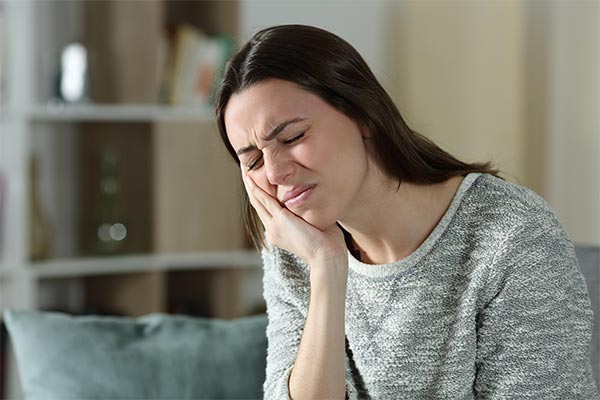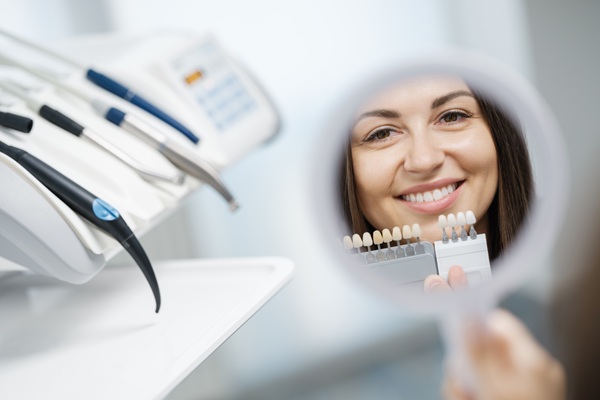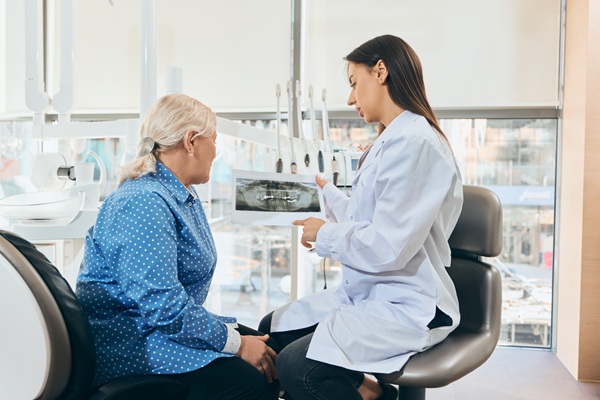 If a dental patient has pain in the jaw, neck, or face, a case of TMJ may be suspected. Self-diagnosing is not wise in most dental cases, but with TMJ, a patient should visit a dentist as soon as possible and exercise caution before purchasing over-the-counter devices to remedy the problem.
If a dental patient has pain in the jaw, neck, or face, a case of TMJ may be suspected. Self-diagnosing is not wise in most dental cases, but with TMJ, a patient should visit a dentist as soon as possible and exercise caution before purchasing over-the-counter devices to remedy the problem.
In many instances, over-the-counter products are not regulated or recommended and can actually worsen this dysfunction. Temporomandibular joint disorders are multifaceted syndromes that can include the jaw joint itself, as well as the structures surrounding it. Depending on the patient, TMJ can be a quick fix or a long, complicated process.
What causes TMJ?
TMJ pain often originates in muscles or the jaw joint itself, and it can involve a combination of several factors. Nighttime bruxism, or teeth grinding, can precipitate muscle tension in the jaw, and this can lead to headaches and neck pain. Teeth grinding, as well as habitual clenching, can wear away teeth and result in soreness and stiffness in the jaw.
Diseases, such as arthritis, that directly affect the jaw joint can also cause TMJ. Researchers are not sure exactly what brings about the disorder in some people, but many patients who have experienced ill-fitting braces, poorly aligned teeth, or injury to the jaw can develop TMJ afterward. On the other hand, there are patients with a history of substandard dental care who never develop this condition.
How does a dentist diagnose TMJ?
Though temporomandibular joint disorders can cause immense pain and interfere greatly with a patient’s quality of life, this mysterious condition can disappear as quickly as it appeared. Sometimes there is a simple explanation for the pain, and sometimes it takes a while to diagnose. A dentist is qualified to examine patients for mouth and jaw abnormalities and perform tests that determine the source of the patient’s pain.
Manual examination
A dentist will do a physical examination of the patient, including palpating the jaw hinge, the jaw muscles, and the structures on the inside of the patient’s mouth that may be involved in the TMJ dysfunction. As most cases of TMJ are not clear-cut in the beginning, the dentist will likely ask the patient many questions involving the stress level, medical history, and preexisting conditions such as arthritis that may directly lead to pain in the TMJ region.
Scans of the area
The dentist may order an MRI or CT scan of the jaw joint to rule out any structural abnormalities. The patient may show signs of other conditions, such as the beginnings of inflammatory arthritis, affecting the joint. At this point, the dentist usually makes a plan with the patient to treat lingering TMJ symptoms after any medical conditions are addressed.
Conclusion
While a number of patients can be diagnosed with chronic TMJ, some may get better and relapse in a cycle, and others may only experience one episode. While the mystery of TMJ has not been solved, a qualified dentist can assist in a patient's fight against this disorder in many different ways.
Request an appointment or call Complete Dental at 559-448-9000 for an appointment in our Fresno office.
Related Posts
Jaw pain is usually symptomized by throbbing pain. It can start abruptly, or mildly at first and worsen over time. Regardless, the symptoms depend on the origin of the pain. Knowing the causative agent is the first course of action in treating this condition. One of the most common causes of jaw pain is misaligned…
Disorder of the temporomandibular joint, or TMJ, is a condition that can cause difficulty with jaw functions. The disorder can cause jaw pain that restricts how you open and close your mouth. You might notice clicking sounds or jaw locking when eating, talking or yawning. Continue reading to learn more about the symptoms, diagnosis and…
In the dental community, TMJ disorders are a relatively common issue. Many adults experience the telltale signs of jaw problems at some point in time. These can include:InflammationPain or sorenessTension and stiffnessClicking/popping when opening or closing the mouthTrouble opening the mouth fullyFor some people, TMJ disorder is a serious, chronic problem that requires medical intervention.…


